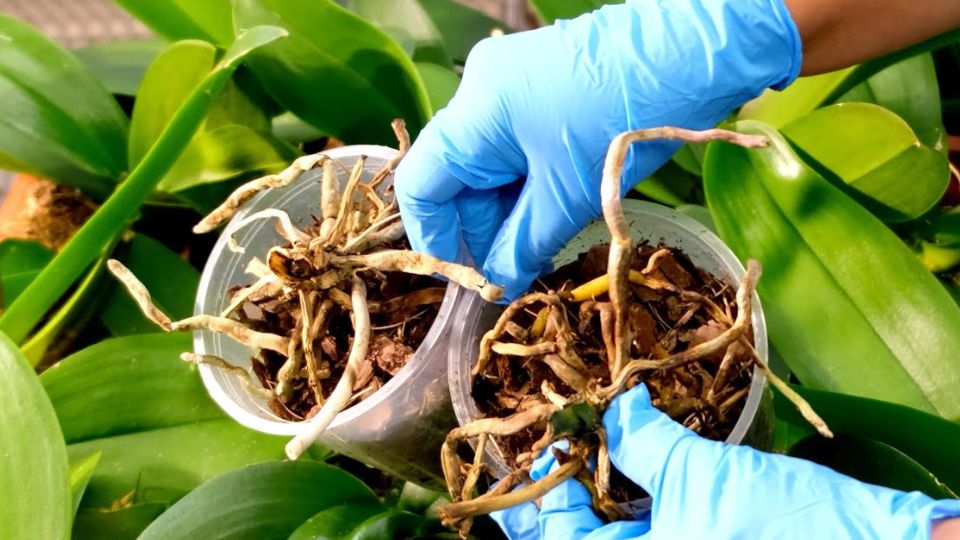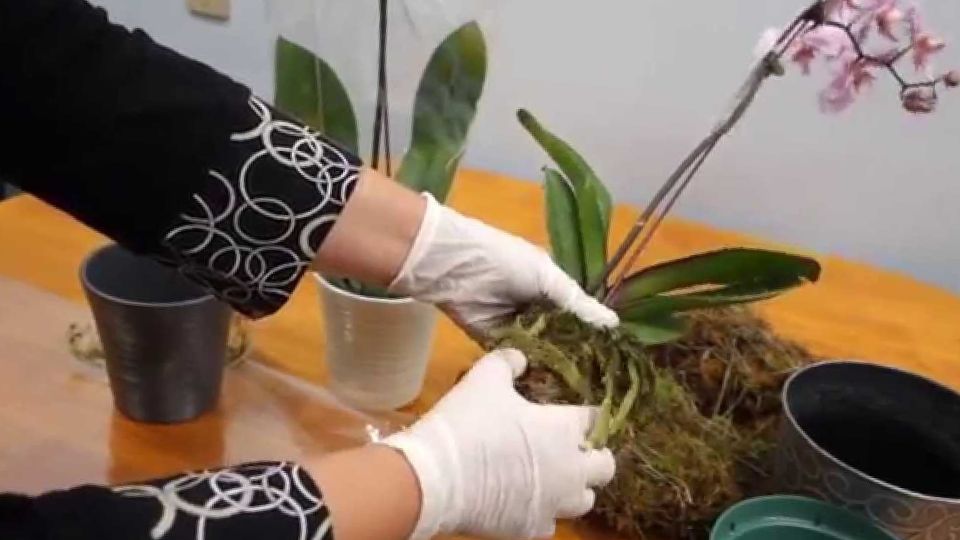Are you worried about the reason why my orchid stem dried Out? Some of the common causes are overwatering, underwatering, poor Drainage, inadequate humidity, age, extreme temperature, etc.
Orchids are delicate plants and they must have some form of care every now and then. If you are doing it all indoors then you have to put more care accordingly.
In this article, we discussed all the possible reasons and solutions and answered your frequently asked questions as well. Let’s get started.
What Does Dried Stem of Orchid Indicate?
A dried-out stem in an orchid is a clear indication that the plant is experiencing some form of stress or improper care. The stem plays a vital role in the orchid’s overall health as it transports water and nutrients from the roots to the rest of the plant.
When the stem dries out, it can lead to wilting, bud drop, and even the death of the orchid if left untreated. Therefore, it is crucial to identify the reasons behind the issue and take appropriate action to restore the orchid’s health.
Reasons My Orchid Stem Dried Out
A dried-out orchid stem can be attributed to various factors, each of which can significantly impact the plant’s health. Understanding these reasons can help you identify the cause behind your orchid’s stem desiccation and take appropriate actions to remedy the situation.
Here are some common reasons why your orchid stem may have dried out:
Overwatering
Overwatering is one of the most common causes of orchid stem drying out. Orchids prefer a balance between moist and dry periods, and constantly soggy roots can lead to root rot, hindering the plant’s ability to take up water and nutrients effectively. As a result, the stem can become dehydrated.
Underwatering
Conversely, underwatering can also cause the orchid stem to dry out. When the plant does not receive enough water, it cannot maintain proper hydration, leading to wilting and shriveling of the stem.
Poor Drainage
Orchids require well-draining potting media to prevent water from accumulating around the roots. If the potting medium retains excess moisture, it can suffocate the roots and cause the stem to dry out.
Inadequate Humidity
Orchids are native to tropical regions with high humidity levels. If the surrounding air is too dry, the plant will lose moisture through transpiration, resulting in a dried-out stem.
According to the American Orchid Society:
Interestingly, orchids and other epiphytes, which can absorb water through their leaves, have a mechanism to absorb water vapor through their stomata, but not water on their leaves. Virtually all orchids do best when humidity ranges from 40% to 70%.
Root Problems
Unhealthy or damaged roots can impair the orchid’s ability to absorb water and nutrients, leading to water stress and a dried-out stem.
Lack of Proper Light
Orchids need appropriate levels of light for photosynthesis and overall health. If the plant receives insufficient light, it may not be able to produce enough energy to sustain its growth and may exhibit symptoms like a dried-out stem.
Extreme Temperatures
Drastic temperature fluctuations or exposure to extreme heat can cause stress to the orchid, leading to dehydration and a dried stem.
Age
As orchids age, some parts of the plant, including the stem, may naturally wither and dry out. This is a normal part of the plant’s life cycle.
Disease or Pests
Infestations of pests or infections caused by bacteria, fungi, or viruses can weaken the orchid’s health, resulting in a dried-out stem.
Improper Repotting
If the orchid was recently repotted and its roots were disturbed or damaged during the process, it may struggle to uptake water, leading to stem desiccation.
To determine the specific reason behind your orchid’s dried-out stem, carefully observe its overall condition and review your care routine. Consider factors such as watering frequency, humidity levels, light exposure, and the condition of the potting medium and roots.
Making the necessary adjustments to address the underlying issue will help revive your orchid and promote its overall well-being.
Reasons and Solutions At a Glance: Orchid Stem Dried Out
Here’s a table summarizing the reasons behind a dried-out orchid stem and the corresponding solutions:
| Reason | Solution |
| Overwatering | Adjust the watering schedule, and allow the medium to dry out |
| Underwatering | Water orchid adequately, ensure proper drainage |
| Poor Drainage | Repot in a container with drainage holes |
| Inadequate Humidity | Use a humidity tray or humidifier |
| Root Issues | Trim unhealthy roots, and repot in fresh medium |
| Pests and Diseases | Identify and treat pests or diseases accordingly |
| Natural Aging | Trim dried stem after flowering phase |
What to Do When My Orchid Stem Dried Out?
When you notice that your orchid stem dried out, it’s essential to take immediate action to assess the plant’s condition and address the underlying issue. Here’s what you should do when your orchid stem has dried out:
Inspect the Orchid
Carefully examine the entire plant, including the leaves, roots, and remaining stem, to assess its overall health. Look for any signs of distress, such as wilting leaves, yellowing, pests, or diseases.
Identify the Cause
Try to determine the reason behind the dried-out stem. Common causes include overwatering, underwatering, poor drainage, low humidity, root issues, inadequate light, extreme temperatures, natural aging, disease, or improper repotting.
Adjust Watering
If overwatering or underwatering is the issue, adjust your watering routine accordingly. For most orchids, it’s essential to water them only when the potting medium approaches dryness.
Ensure the pot has drainage holes to prevent water from accumulating around the roots.
Check Humidity
If your home has low humidity, consider increasing it around the orchid. You can use a humidity tray, or a room humidifier, or place the orchid in a more humid location, such as a bathroom or kitchen.
Re-pot If Necessary
If you suspect poor drainage or root issues are causing the problem, consider repotting the orchid. Gently remove the plant from its current pot, inspect the roots, trim any damaged or rotten roots, and repot it in fresh orchid potting mix with good drainage.
Provide Proper Light
Ensure your orchid is getting the right amount of light based on its species. Orchids generally prefer bright, indirect light, but the specific light requirements can vary.
Protect from Extreme Temperatures
Keep your orchid away from drafts, heating vents, or air conditioning units to avoid exposure to extreme temperatures.
Treat Pests and Diseases
If you find any pests or signs of diseases, take immediate action to treat the issue. Use appropriate pesticides or fungicides according to the type of infestation.
Trim Dried Stem
If the orchid stems dried out due to natural aging or post-flowering or in case the orchid stem died, first you should check where to cut the orchid stem. Then, carefully trim the dead portion using sterilized pruning shears. Cutting above a node can encourage new growth.
Monitor and Observe
After taking the necessary steps to address the issue, closely monitor your orchid’s progress. Be patient, as it may take some time for the plant to recover and produce new growth.
Remember that orchids can be sensitive to changes, so avoid making too many adjustments at once. Always provide gentle care and observe how your orchid responds to the changes you make.
With proper attention and care, your orchid has a good chance of recovering and thriving once again.
How to Prevent Orchid Stem Drying in the Future?
Keeping your orchid healthy starts with preventing issues before they begin. If your orchid stem dried out once, it’s a good idea to adjust your care routine to avoid it happening again. Here’s how to prevent orchid stem drying and support strong, long-term growth.
Create a Consistent Watering Schedule
Orchids don’t like to stay too wet or too dry. Instead of guessing, create a watering schedule based on your plant’s needs and environment. Water only when the top inch of the orchid potting mix feels dry. Overwatering can lead to root rot, while underwatering causes dehydration, both leading to a dried orchid stem.
Choose the Right Potting Mix for Orchids
The best orchid care begins with the right growing medium. Use a well-draining mix made with bark, perlite, or sphagnum moss. These materials allow airflow to the roots, helping the plant absorb water without getting soggy. Avoid using garden soil or compact materials that retain too much moisture.
Use a Humidity Monitor Indoors
Orchids thrive in humidity levels between 40-70%. Dry indoor air, especially during winter, can stress the plant and dry out the stem. Using a humidity monitor or hygrometer helps you track the moisture level. You can also add a humidity tray or mist the leaves lightly to boost moisture.
Watch for Early Signs of Stress
Keep an eye on your orchid’s leaves and stem. Wrinkled leaves, yellowing, or drooping stems are early signs that something is off. Catching problems early, whether from low light, poor airflow, or pests, can stop stem drying before it starts.
By any chance, if your orchid stem is turning pink, try these tricks.
FAQs
Can low humidity cause my orchid stem to dry out?
Yes, low humidity can lead to stem desiccation. Orchids thrive in high-humidity environments. Use a humidity tray, humidifier, or group plants to increase humidity levels around your orchid. Regular misting can also provide additional moisture.
I repotted my orchid recently, and now the stem is drying out. What should I do?
Improper repotting can stress the plant, leading to stem issues. Ensure minimal root disturbance during repotting, and water the orchid adequately afterward to help with root recovery. Check for proper drainage in the new potting mix.
Could pests be causing my orchid stem to dry out?
Yes, infestations or infections can weaken the plant and cause stem desiccation. Inspect the orchid for pests and signs of spots or discoloration. Treat pests promptly with appropriate insecticides and apply fungicides as needed.










